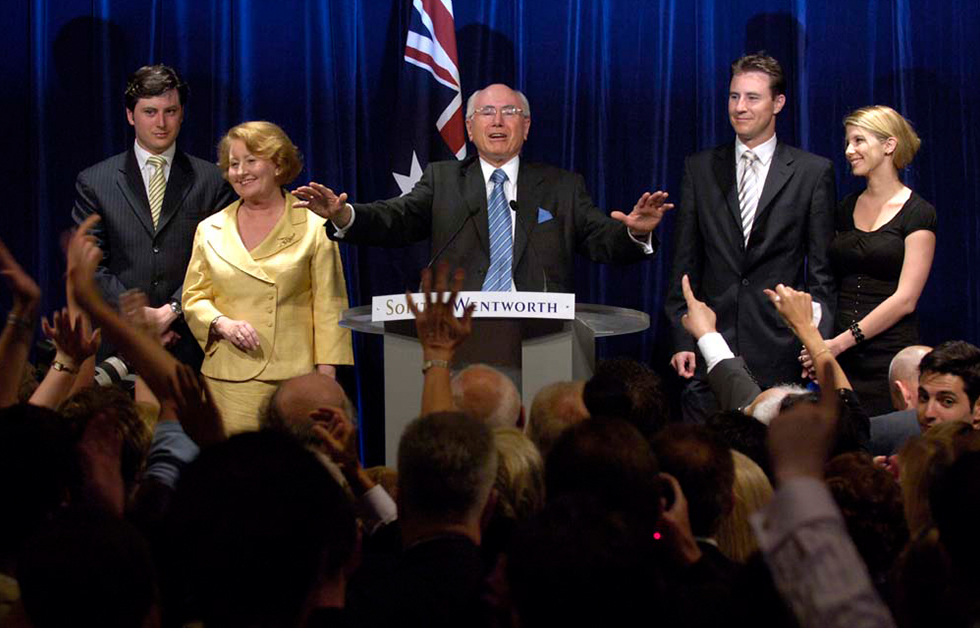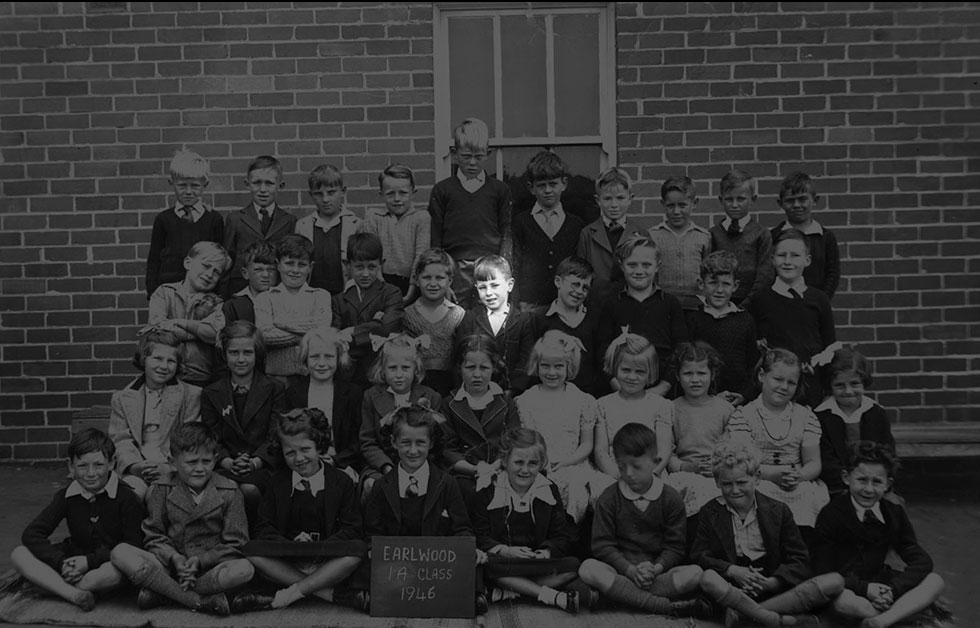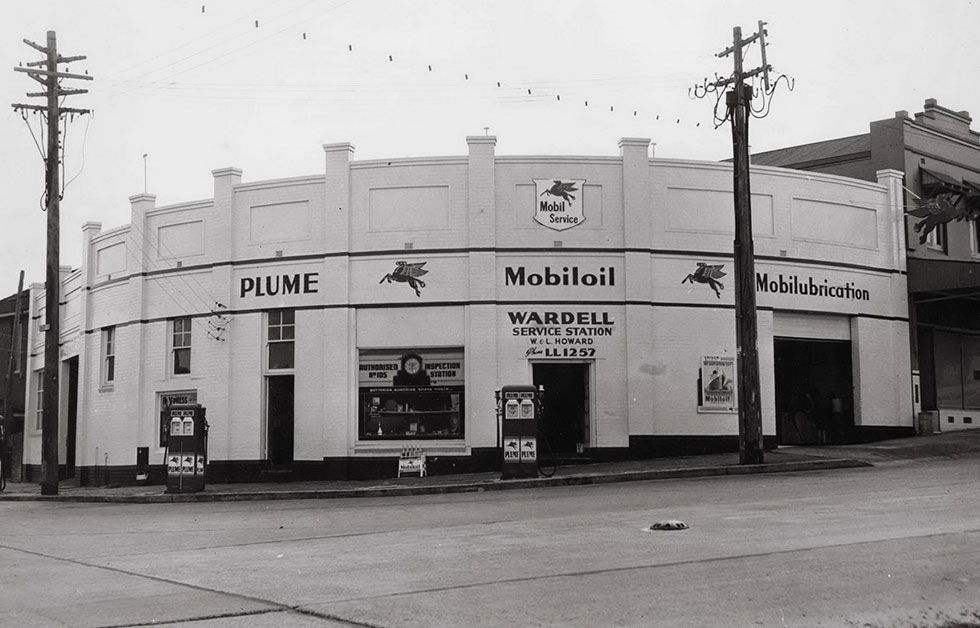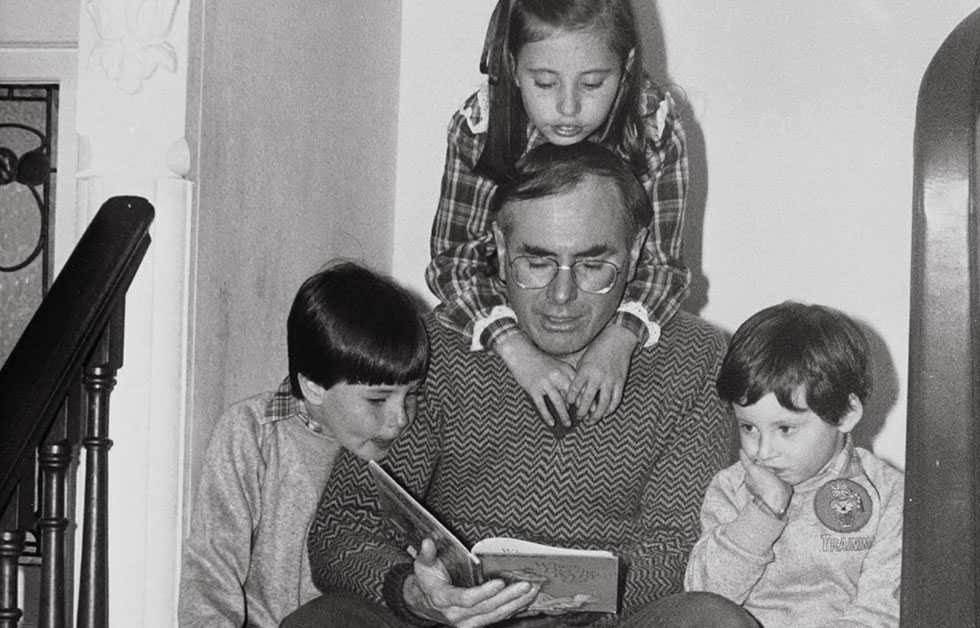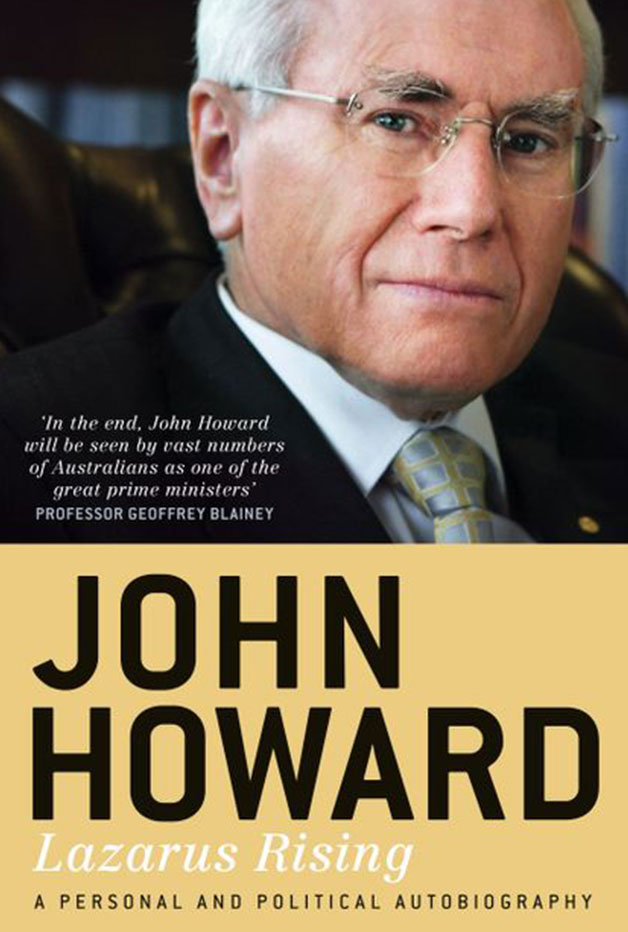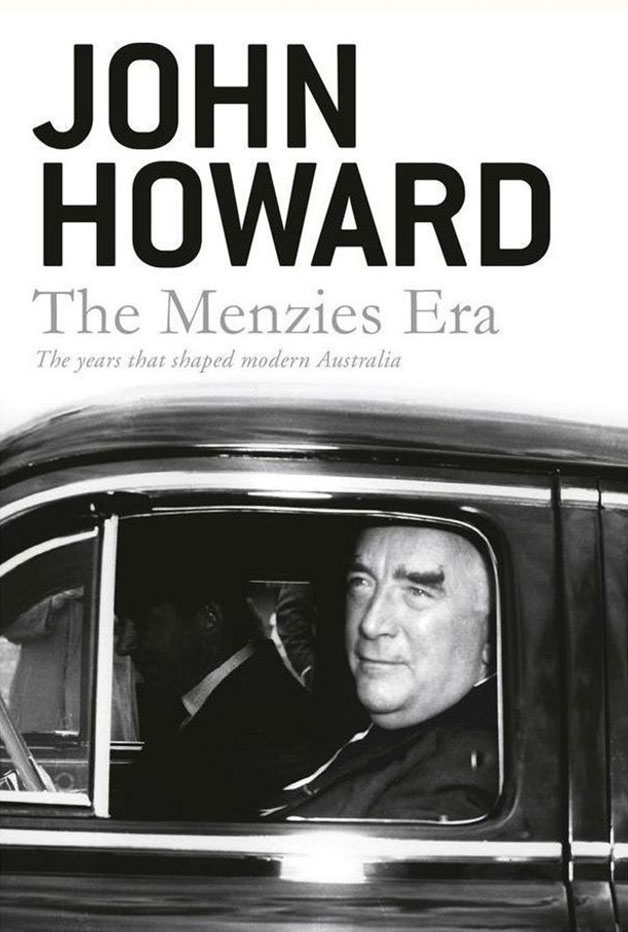1996
38TH FEDERAL ELECTION
At the federal election on 2 March 1996, the Liberal-National Party coalition under Howard was swept into power with a sweeping majority in the House of Representatives.
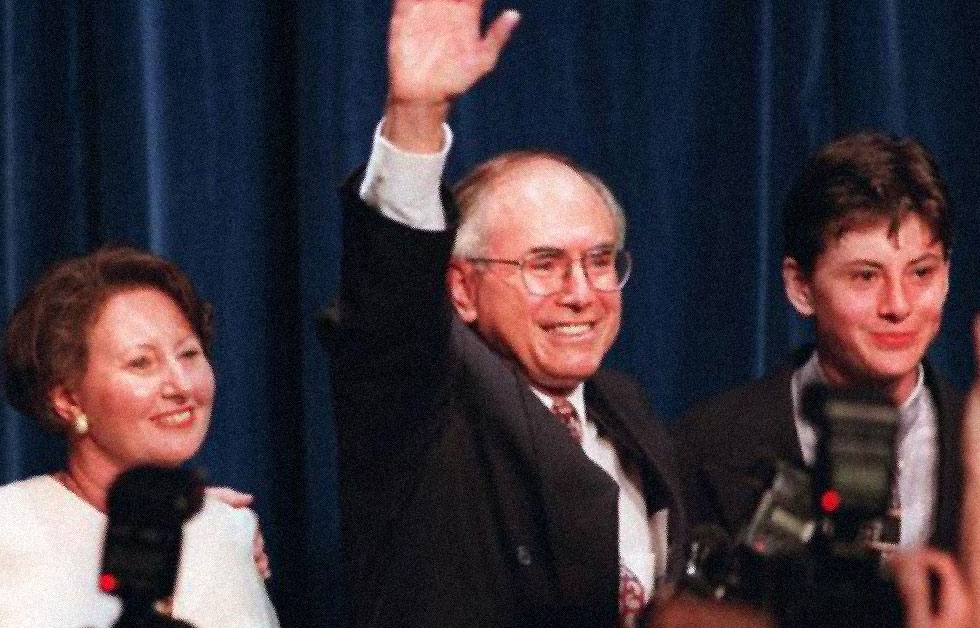
GUN BUY-BACK SCHEME
A gunman killed 35 people at Port Arthur, Tasmania. Twelve days later, Prime Minister John Howard announced a scheme for uniform gun laws throughout Australia.
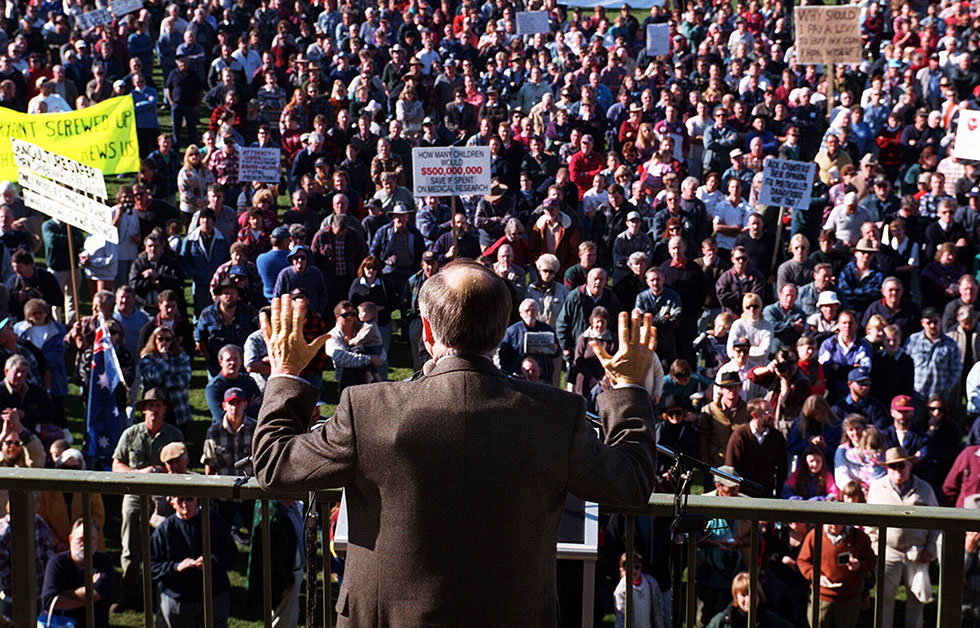
TELSTRA ON SALE
The Bill enabling the share market sale of one half of Telstra passed both Houses of Parliament.
WIK NATIVE TITLE
The full High Court determined that pastoral leases did not extinguish native title. The Prime Minister proposed a ‘10-point plan’ in April 1997 in an attempt to allay pastoralists’ concerns about the implications of the judgment.
1997
RESTRUCTURING INDUSTRIAL RELATIONS
Most of the provisions of the Workplace Relations Act 1996 came into effect.
ONE NATION
Pauline Hanson launched a new political party in Ipswich, Queensland.
RECONCILIATION
The Prime Minister tabled the Human Rights and Equal Opportunity Commission’s report on the separation of Aboriginal and Torres Strait Islander children from their families, Bringing Them Home.
WATERFRONT DISPUTE
Tensions with unions came to a head in 1997 when balaclava-clad security men and guard dogs stormed the nation's wharves to quell Australia's biggest ever industrial dispute.
Picture below: Tony McDonough
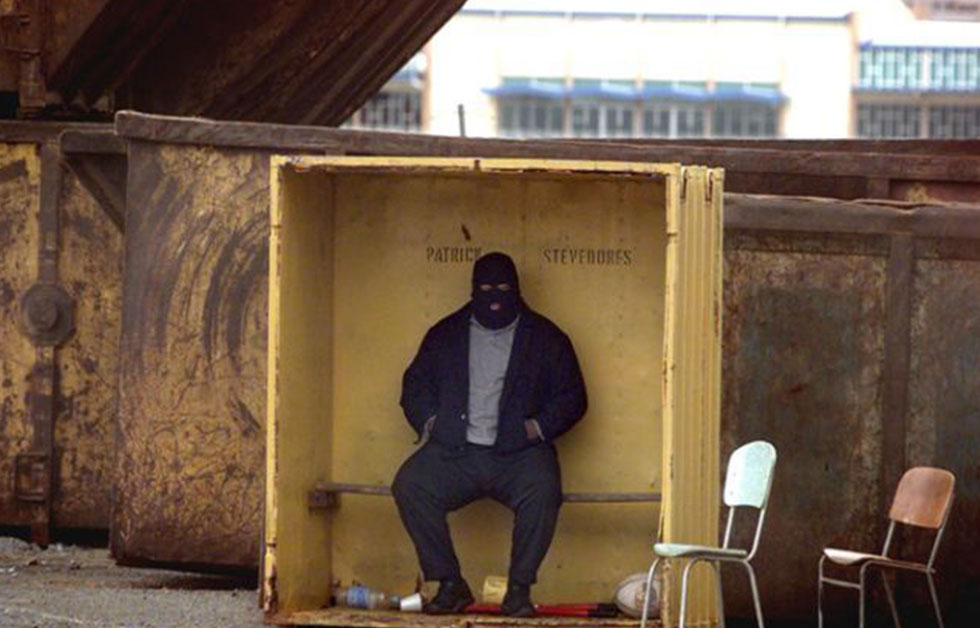
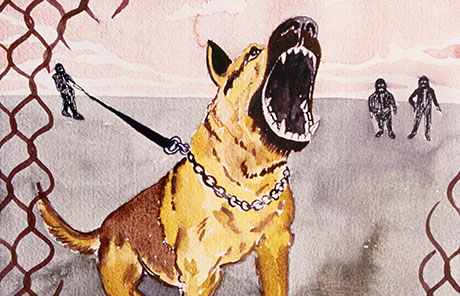
1998
39TH FEDERAL ELECTION
Coalition under Prime Minister John Howard retained government.
1999
EAST TIMOR INTERVENTION
Howard and then UN secretary-general Kofi Annan agreed Australia should lead a multinational force in East Timor, later dubbed INTERFET.


NEW PROTECTION
Enactment of the Environment Protection and Biodiversity Conservation Act repeals the 1975 legislation.
REFERENDUM
Australians reject a proposal to establish the Commonwealth of Australia as a republic and the proposed insertion of an additional preamble to the Constitution.
2000
INTRODUCTION OF THE GST
The introduction of a goods and services tax as part of the government's tax reform program aimed at redressing the effects of declining revenue from income tax.
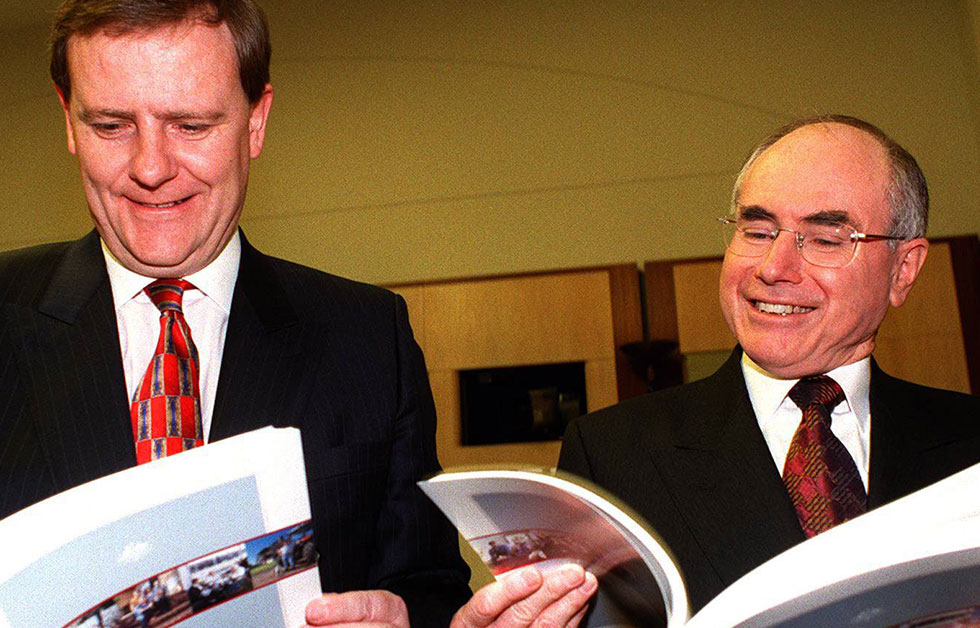
SYDNEY OLYMPIC GAMES
The Governor-General opened the second Olympic Games held in Australia. Sydney’s successful bid for the ‘Green Games’ involved transforming the polluted wasteland of Homebush Bay into a world standard Olympic Park.
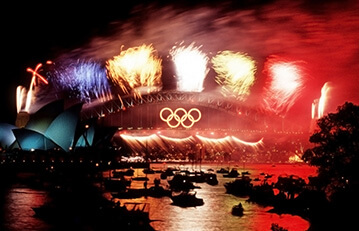
2001
CENTENARY OF FEDERATION
The celebration of Australia’s 100th birthday began in Sydney’s Centennial Park, the site of the inauguration ceremonies on 1 January 1901.

THE NATIONAL CENSUS
The national census measures Australia's population 100 years after Federation.
THE TAMPA CONTROVERSY
A Norwegian ship rescued 433 refugees fleeing repressive regimes in Afghanistan and the Middle East from their sinking boat in the Indian Ocean.
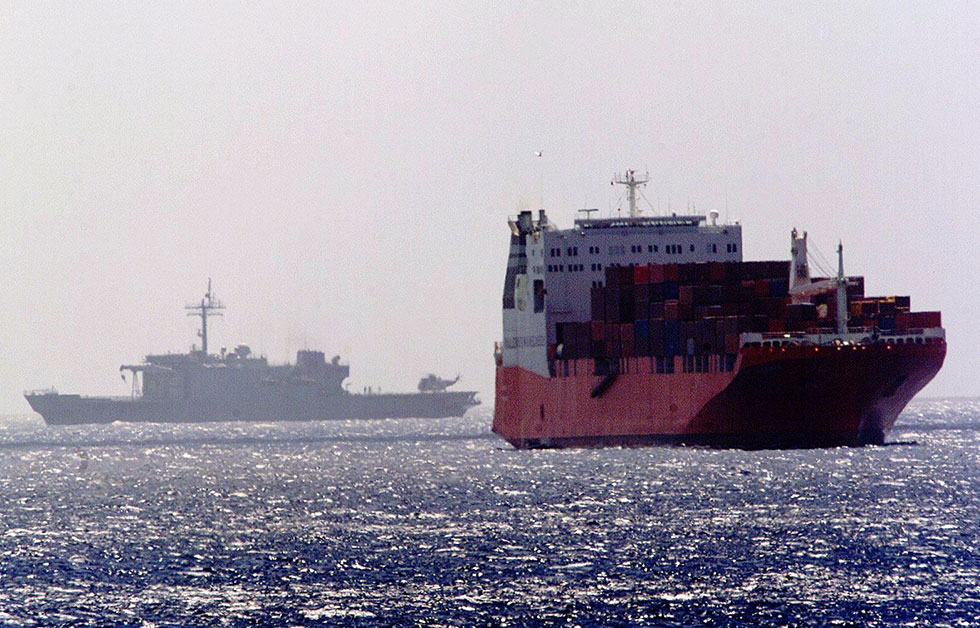
THE GLOBAL WAR ON TERROR
Terrorists flew hijacked United States airliners into the twin towers of the World Trade Centre in lower Manhattan, and into the Pentagon, the US Defence Department headquarters in Washington.

ANSETT CLOSURE
On 14 September 2001, the day of Ansett's closure announcement, thousands of employees met at the State Library of Victoria in Melbourne to protest.
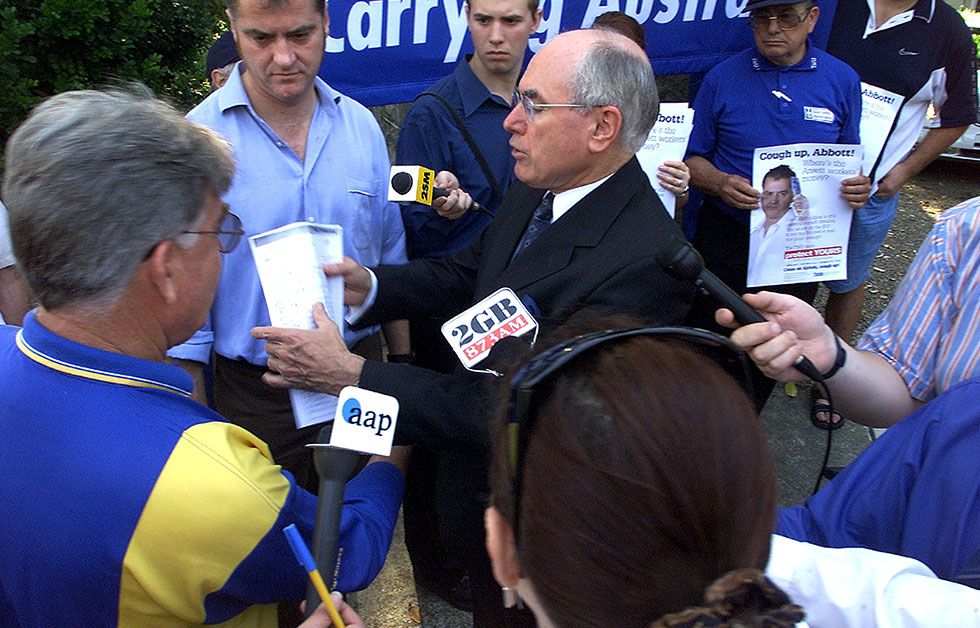
40TH FEDERAL ELECTION
Coalition under Prime Minister John Howard retained government.
2002
ZIMBABWE
The Commonwealth Heads of Government Meeting at Coolum (Queensland) decided to suspend Zimbabwe from the Councils of the Commonwealth as a response to Zimbabwe’s democratic shortcomings.
INDEPENDENT EAST TIMOR
The proclamation of East Timor’s autonomy followed the vote to end Indonesian rule in 1999.
BALI BOMBING
Three bombs were detonated in Bali killing 202 people, including 88 Australians, representing the single largest loss of Australian life due to an act of terror.
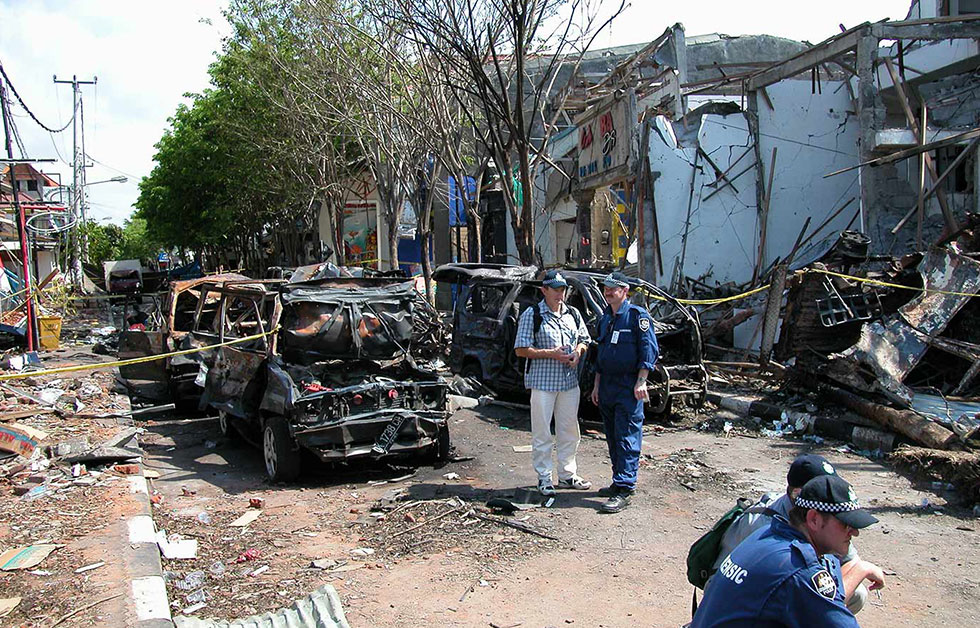
2003
COMMITMENT OF AUSTRALIAN FORCES TO IRAQ
In March 2003, Australia joined the US-led ‘Multinational force in Iraq’ in sending 2000 troops and naval units to support in the invasion of Iraq.
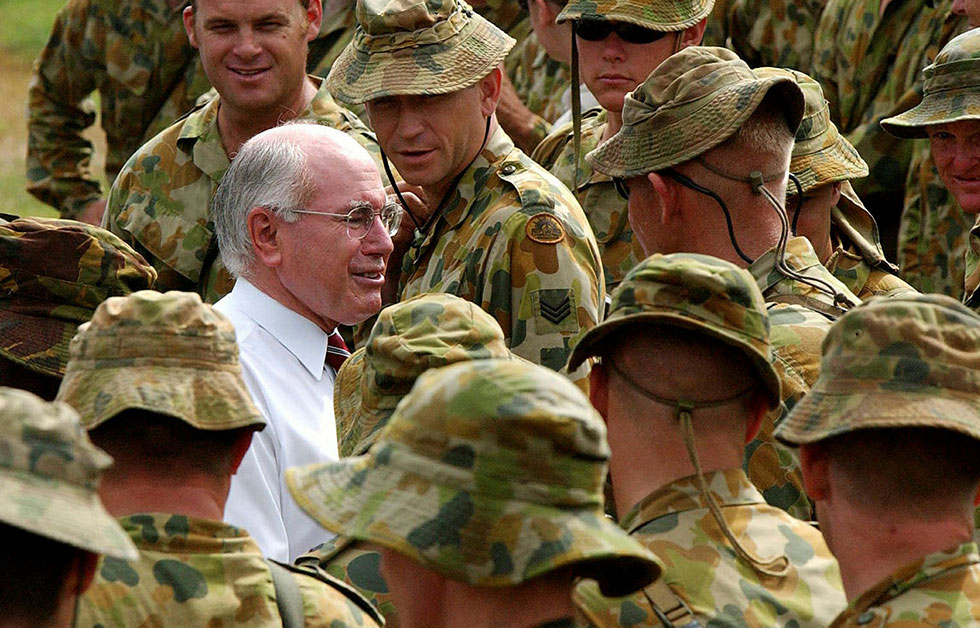
2004
AUSTRALIA-UNITED STATES FREE TRADE AGREEMENT
Legislation implementing the AUSFTA was passed by the parliament, concluding a lengthy process of negotiation that had taken place in 2003 and early 2004.
41ST FEDERAL ELECTION
Coalition under Prime Minister John Howard retained government.
TSUNAMI
On Boxing Day a tsunami brought major devastation and loss of life to eleven countries, including Indonesia, Sri Lanka, the Maldives and Thailand.
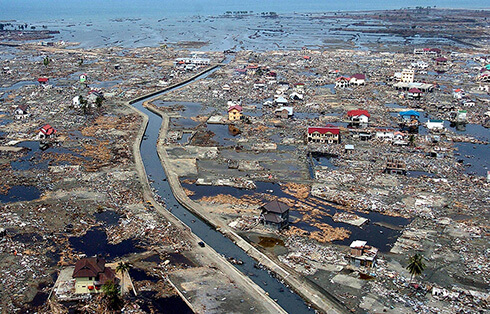
2005
SENATE MAJORITY
The Senators elected at the 41st federal election took their seats, giving the Liberal-National coalition a majority in both chambers.
TELSTRA SALE
The Senate passed the Telstra (Transition to Full Private Ownership) Bill 2005.
INDONESIAN TERROR
More than 20 people are killed and over 120 injured when three suicide bombers set off a blast in Bali, the most serious incident since the 2002 bombing.
ANTI-TERRORISM ACT
In the wake of a series of terrorist attacks overseas, the Anti-Terrorism Act 2005 was passed by the Australian Parliament with the intention of hampering activities of any potential terrorists in the country.
2006
WORKCHOICES
The final element in the restructuring of industrial relations initiated by the Workplace Relations and Other Legislation Amendment Act 1997 was introduced—the WorkChoices policy.
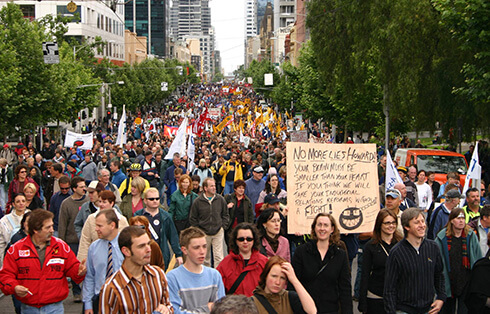
2007
APEC IN AUSTRALIA
Mr Howard chairs the Asia Pacific Economic Cooperation (APEC) leader’s forum in Sydney.
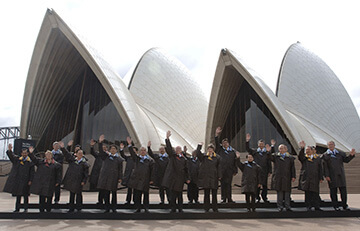
WORKING CLASS LIFE
John Winston Howard was born in the south-western industrial suburb of Earlwood in Sydney, on 26 July 1939. He attended the local government primary school and later Canterbury Boys’ High School. His father, a garage proprietor, influenced his emerging political and economic views, impressing on him the importance of small business as an employment provider.
PARTY MAN
After studying law at the University of Sydney, Howard graduated in 1961, and then practised as a solicitor for the next twelve years. A committed Liberal Party member, he was soon deeply involved in its organisation; he joined the party’s New South Wales State Executive in 1963. He served as State Vice-President of the party 1972–1974.
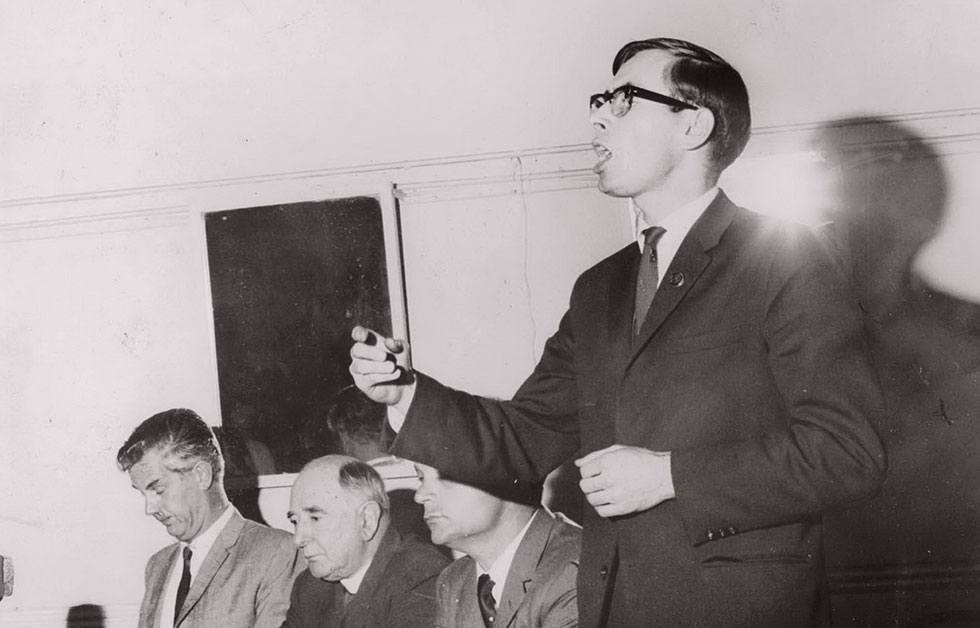 Debating the Vietnam War, c1965-66
Debating the Vietnam War, c1965-66
FAMILY MAN
In 1971 Howard married Janette Parker, and they had a daughter and two sons.
MEMBER FOR BENNELONG
John Howard entered the House of Representatives as Liberal member for the suburban Sydney seat of Bennelong at the general elections on 18 May 1974.
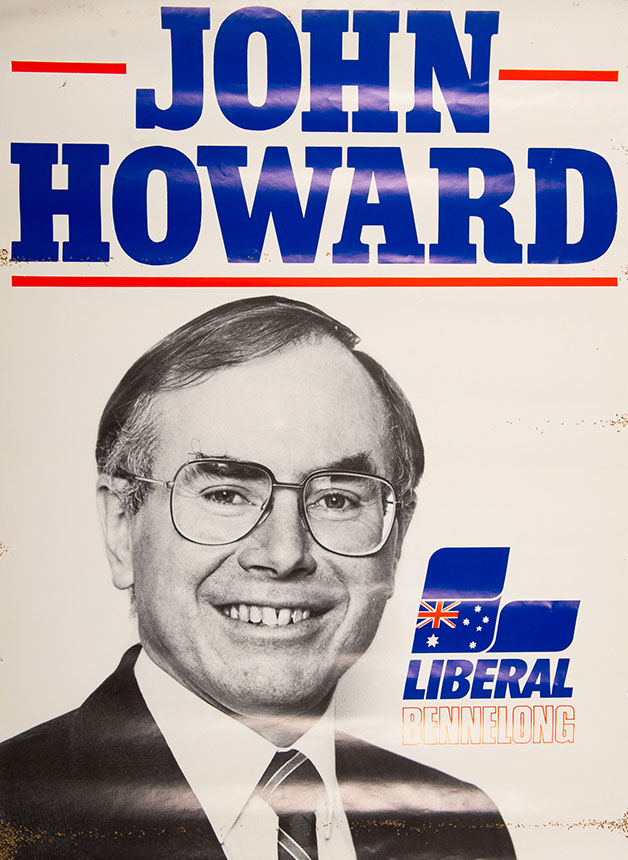 Bennelong campaign poster 1984
Bennelong campaign poster 1984
MINISTERIAL SERVICE
Howard first became a minister following the election of the coalition government of Malcolm Fraser in December 1975, taking on the business and consumer affairs portfolio, which he held until 1977. Other roles thereafter included Minister for Special Trade Negotiations and then the role of Treasurer. He held this position for more than five years, until the Fraser government lost office with the election of the Labor government led by Bob Hawke on 5 March 1983.
LEADER OF THE OPPOSITION
After a failed attempt as opposition leader to topple Bob Hawke's Labor government in the 1987 election, Howard's popularity dipped so low that the now-defunct Bulletin magazine ran a cover picture of him tagged: "Mr 18 per cent. Why on earth does this man bother?" When deposed by his bitter rival Andrew Peacock, Howard remarked ruefully that in order to resurrect his leadership he would have to be "Lazarus with a triple bypass".
 The Bulletin's depiction of John Howard's declining popularity with the electorate. He lost the party leadership five months later.
The Bulletin's depiction of John Howard's declining popularity with the electorate. He lost the party leadership five months later.
AUSTRALIA'S 25TH PRIME MINISTER
In January 1995, following the resignation of Alexander Downer as Opposition Leader. With the Liberal party in disarray and little more than a year before the next federal elections were due, Howard set about vigorously attacking the Labor government led by Paul Keating, mainly on its record of economic management. Under his revitalised leadership, the Opposition coalition began campaigning on the promise of drastically reducing the Commonwealth’s increasingly heavy debt burden.

SPORTING TRAGIC
Howard's love of cricket and other sports was legendary and he presided over what was arguably Australia's finest sporting moment—the 2000 Sydney Olympics.
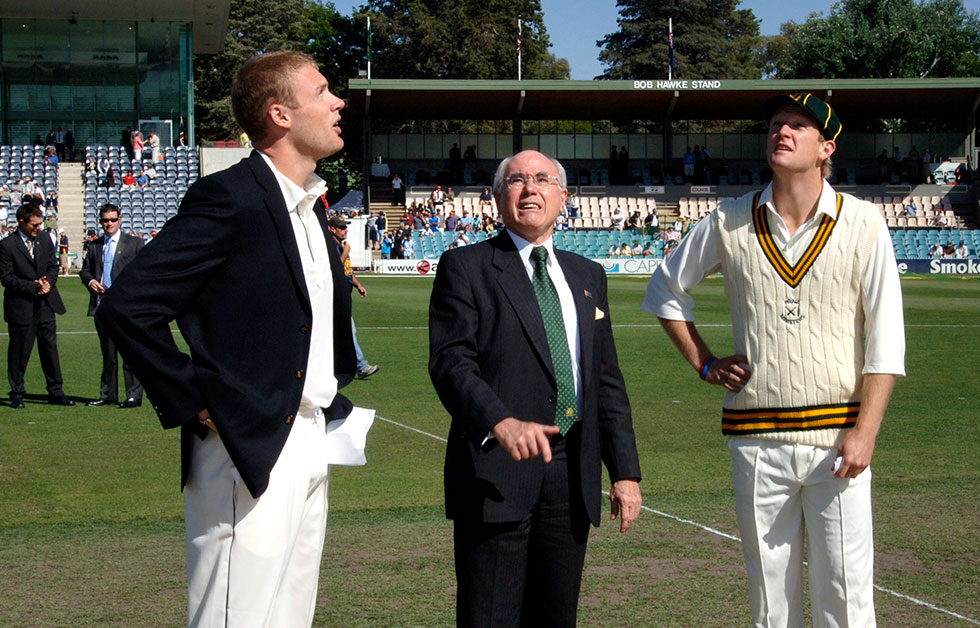
THE WRITER
Since leaving parliament, John Howard has produced two hefty books: his autobiography, Lazarus Rising, published in 2010, and The Menzies Era, published in 2014. In the latter, he writes about Australia in the mid-20th century and his hero, Sir Robert Menzies, the founder of the Liberal Party.
